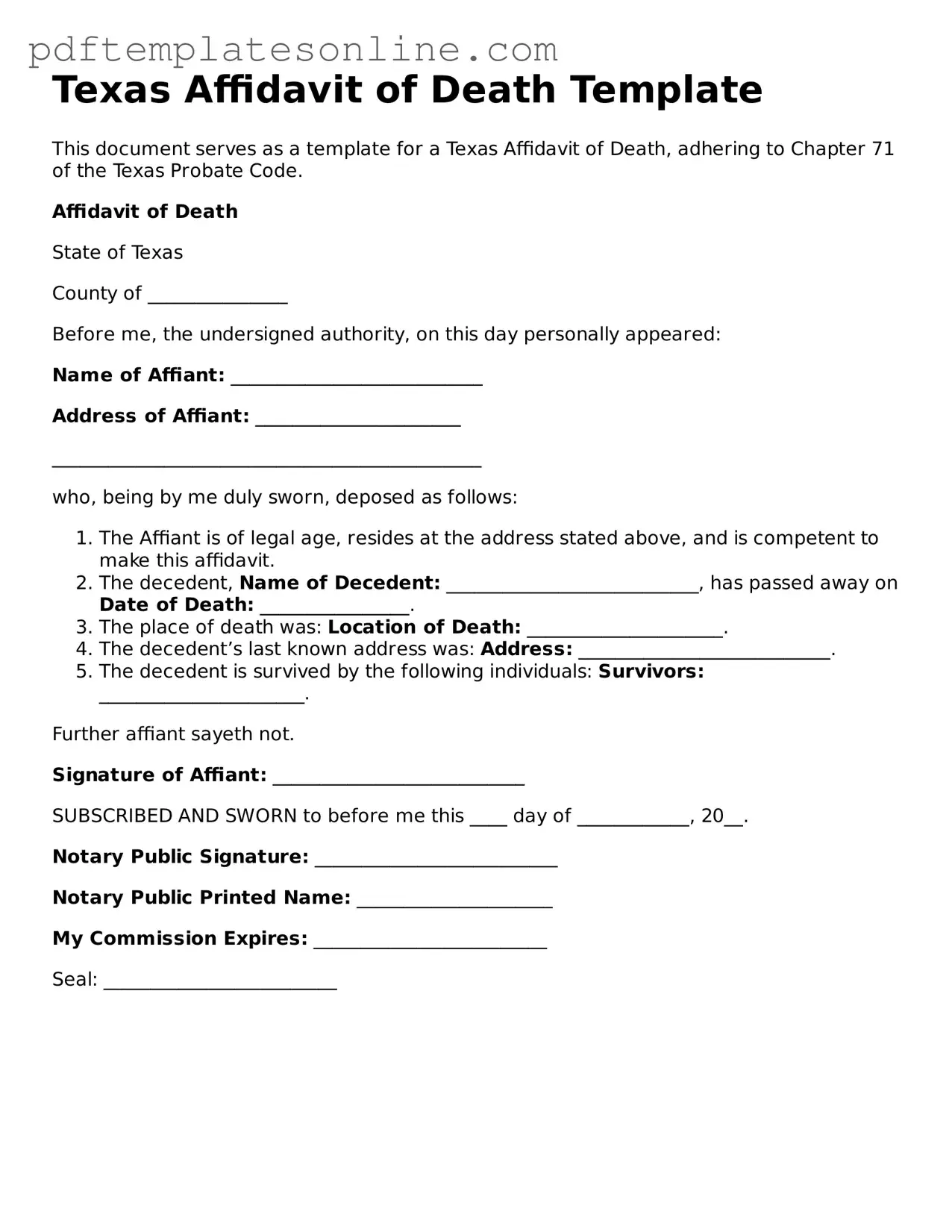Filling out the Texas Affidavit of Death form can seem straightforward, but many people make common mistakes that can lead to delays or complications. One frequent error is not providing complete information about the deceased. It is crucial to include full names, dates of birth, and dates of death. Omitting any of these details can cause confusion and may require additional documentation later.
Another common mistake is failing to sign the affidavit in the appropriate places. Both the affiant and a notary public must sign the document. If either signature is missing, the form may be considered invalid. Additionally, people often overlook the need for a notary. The affidavit must be notarized to be legally binding, so ensure that this step is not skipped.
Some individuals mistakenly use outdated forms. Legal documents can change, and it is essential to use the most current version of the Texas Affidavit of Death form. Check for updates on official state websites or consult with a legal professional to ensure compliance.
Another error involves incorrect formatting of dates. Dates should be written clearly, using the standard format of month, day, and year. Misinterpretation can occur if the format is inconsistent or unclear. This can lead to unnecessary complications in processing the affidavit.
People sometimes fail to provide supporting documentation. The affidavit may require additional documents, such as a death certificate. Not including these documents can result in delays or rejection of the affidavit.
Additionally, some individuals do not properly identify the relationship to the deceased. It is important to clearly state how you are related to the deceased, as this information is vital for the affidavit's validity.
Another mistake is not reviewing the completed form for errors. Typos or incorrect information can lead to significant issues down the line. Taking a moment to double-check all entries can save time and hassle later.
Sometimes, individuals neglect to include their contact information. Providing a phone number or email address can facilitate communication if the court or relevant authorities need to reach you for clarification.
Lastly, people often underestimate the importance of understanding the implications of the affidavit. It is a legal document that may have lasting effects on estate matters. Being informed about what the affidavit entails can help avoid future complications.
By being aware of these common mistakes, individuals can ensure that their Texas Affidavit of Death form is completed accurately and efficiently, helping to streamline the process during a difficult time.
